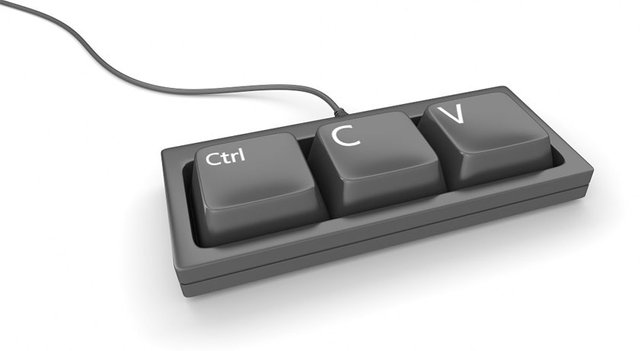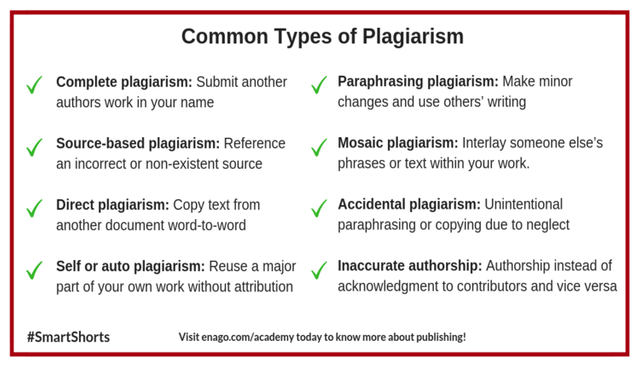Achievement #3 @rebolegi Task: Content Etiquette
WHAT IS PLAGIARISM
Many people think of plagiarism is simply just copying or borrowing someone else’s work or ideas. The terms copying and borrowing can be misleading and disguise the seriousness of the offense. It's an ethical issue when you steal or rob someone else’s work or ideas and claim them as your own!
"Plagiarism is presenting someone else’s work or ideas as your own, with or without their consent, by incorporating it into your work without full acknowledgement. All published and unpublished material, whether in manuscript, printed or electronic form, is covered under this definition. Plagiarism may be intentional or reckless, or unintentional. Under the regulations for examinations, intentional or reckless plagiarism is a disciplinary offence." Source
HOW TO AVOID PLAGIARISM?
Plagiarism can be avoided by simply citing your sources. Acknowledging that you have copied or borrowed and providing your audience with the information that refer to the source is usually enough to prevent plagiarism.
Plagiarism can involve copying words or images directly, paraphrasing sentences or passages, or co-opting someone else’s ideas without citing the original work.
When using images or content that is not yours, make sure to quote the source of the image or content.
Free images on the internet can be obtained from the following websites:
https://pixabay.com
https://pixels.com
https://shuttersstock.com
https://unsplash.com
TYPES OF PLAGIARISM
Plagiarism can involve copying words or images directly, paraphrasing sentences or passages, or co-opting someone else’s ideas without citing the original work.
In academic writing, there are various types of plagiarism you might encounter:
- Global plagiarism – plagiarizing an entire text. This includes purchasing an essay or turning in an assignment completed by someone else.
- Patchwork or mosaic plagiarism – copying phrases, passages, and ideas from different sources and compiling them into a new text.
- Incremental plagiarism – inserting a small amount of plagiarized content in a mostly original text.
- Self-plagiarism – recycling your own previous work that you’ve already submitted or published.
SUMMARY
Plagiarism is wrong because it doesn’t give credit where credit is due—to the person or entity that originally created the work.
Accidental plagiarism is also very common. This happened when either you forgot to cite your source, paraphrased something too closely, or maybe you can't remember or unsure where you got the idea from or if it's original or not.
When in doubt, always make sure you're citing your sources, or consider checking your work through a plagiarism checking tool prior to submission.
"I have read and understood the Steemit Etiquette on Steemit Community and will do my best to embrace them"
Reference:
Achievement #3: Content Etiquette
The Complete Steemit Etiquette Guide (Revision 2.0) -Homage
Plagiarism
Plagiarism
Common Types of Plagiarism
Citing Sources
Achievements:
Achievement #1: Self Introduction
Achievement #2 @rebolegi Task: Basic Security on Steem


Verified, R2
Thank you.
c/upvote done via this post How Do I Get My Achievements Verified?